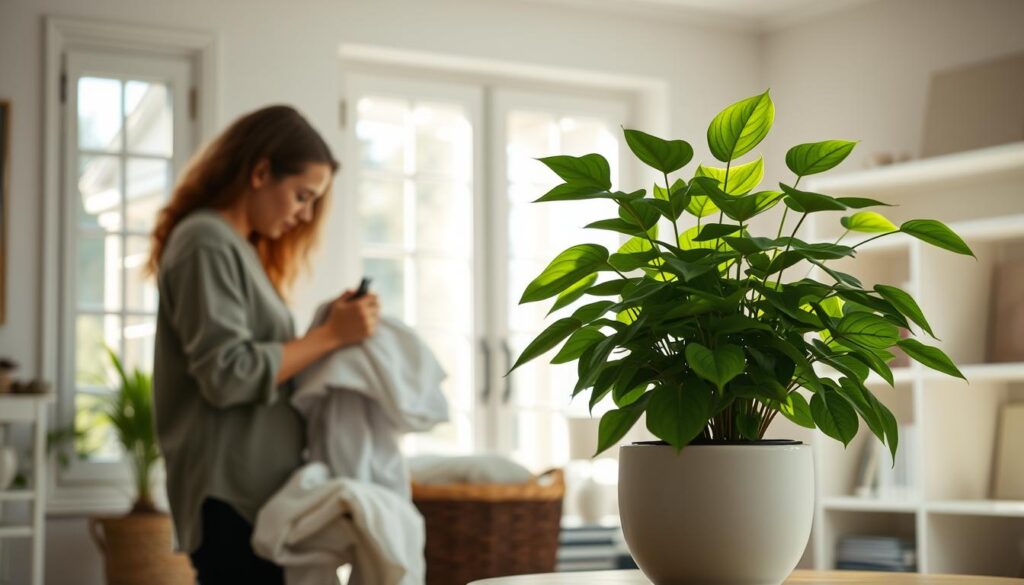15 Habits to Drop if You Want to Start Fresh Now
Neuroscience reveals it takes an average of 66 days to form a habit – but just one unexamined pattern can keep you anchored to the past. Nearly 43% of daily behaviors are automatic, according to Duke University researchers, meaning nearly half your day unfolds without conscious choice.
This post contains affiliate links. If you purchase through these links, I may earn a small commission at no extra cost to you. Learn more here.
This isn’t about blame, but awareness. Old routines often linger like invisible scripts, shaping decisions that no longer align with who you’re becoming. By identifying which patterns drain your energy or cloud your focus, you create space for intentional growth.
We’ll explore practical ways to audit your current rhythms, blending Charles Duhigg’s habit loop framework with real-life success stories. You’ll discover how small, deliberate shifts in your daily approach can compound into meaningful progress. The journey isn’t about perfection – it’s about aligning your actions with the life you want to build.
Letting go of unhelpful habits is a powerful step toward personal growth. To support your journey, consider incorporating audiobooks into your daily routine. Audible offers a vast selection of titles that can inspire and guide you through transformation.
With Audible’s 30-day free trial, you can:
- Select any audiobook from their extensive collection to keep.
- Enjoy unlimited listening to thousands of titles, including Audible Originals and podcasts.
- Experience flexibility, as you can cancel anytime before the trial ends without any charges.
After the trial, membership continues at $7.95/month, but you can cancel online anytime.
For those seeking inspiration, consider starting with:
- Atomic Habits by James Clear: Discover practical strategies to build good habits and break bad ones.
- The 5 AM Club by Robin Sharma: Learn about the transformative power of early rising and how it can elevate your life.
➡️ Try Audible Free for 30 Days and take the first step toward a renewed you.
Key Takeaways
- Automatic behaviors consume nearly half your waking hours
- Habit formation science helps rewrite unhelpful patterns
- Self-auditing creates clarity for intentional change
- Practical examples bridge theory and real-world application
- Progress stems from consistency, not overnight overhauls
Understanding Habit Patterns
Think of your daily rhythms as rivers carving canyons – subtle repetitions that gradually shape your life’s landscape. What begins as a conscious choice often becomes automatic, steering decisions without permission. Recognizing this flow is the first step toward redirecting it.
Defining Habits vs. Routines
A routine requires intention: setting a 6 AM alarm for morning meditation. A habit operates on autopilot – reaching for your phone before your feet touch the floor. Psychologist Wendy Wood notes “habits form when contexts trigger actions without goals”. This distinction matters because automatic behaviors bypass conscious decision-making.
The Science Behind Habit Formation
Charles Duhigg’s habit loop framework reveals three components: cue, routine, reward. Your brain links environmental triggers (like stress) with actions (snacking) that deliver relief. Over time, neural pathways strengthen through repetition – which explains why breaking patterns feels physically uncomfortable.
Consider coffee rituals. What starts as a deliberate routine (brewing pour-over at sunrise) can become a non-negotiable craving. The key lies in spotting when helpful practices cross into compulsive territory. By mapping your personal habit loops, you gain power to rewrite them.
Identifying 15 Habits to Drop if You Want to Start Fresh
What separates intentional living from autopilot existence? The awareness to spot energy-draining behaviors before they solidify into permanent grooves. Consider these common patterns worth examining:
- Reaching for screens within 60 seconds of waking
- Postponing creative work until “ideal conditions” arrive
- Snacking while distracted by devices
- Overcommitting to avoid disappointing others
- Criticizing yourself for minor imperfections

Habit formation expert Dr. Liana Ramirez notes: “The routines we defend most fiercely often mask underlying fears. That third coffee? It might be numbing your need for real rest.” Notice how small choices – like checking emails during family dinners – accumulate into larger disconnections.
Ask yourself: Which behaviors leave you feeling drained rather than energized? Does scrolling through newsfeeds enhance your day or fragment your focus? This inventory isn’t about judgment – it’s mapping what deserves pruning to nurture healthy habits.
Keep a simple log for three days. Star moments when actions clash with your goals. These friction points reveal where old patterns still hold power. As you spot them, you create space to plant something new – like replacing late-night streaming with a calming walk.
Recognizing the Impact of Habits on Daily Life
Your morning coffee ritual does more than wake you up – it sets the tone for how you engage with the world. Small repeated actions quietly shape your energy levels, focus, and emotional resilience throughout the day. A University of Southern California study found people who start mornings with intentional habits report 23% higher productivity by noon compared to those reacting to external demands.

Consider how background music during work hours might boost concentration, or how clutter in your physical space drains mental clarity. These environmental factors act as invisible architects, reinforcing patterns without conscious effort. Nightly screen scrolling before bed? Research shows it delays melatonin production by 40 minutes on average, stealing rest needed for next-day progress.
Positive routines create compound interest. A 10-minute evening journaling practice builds self-awareness. Walking meetings spark creativity. But autopilot behaviors work similarly – that third snack while distracted chips away at mindful eating goals.
“What we repeat becomes our reality. The difference between thriving and surviving often lies in which patterns we fuel.”
Notice where your current habits bring joy versus friction. Does checking emails during family dinners align with your vision for a best life? Awareness turns daily choices into deliberate steps rather than default reactions. This clarity becomes the foundation for meaningful change.
Performing a Comprehensive Habit Audit
Imagine your daily patterns as invisible threads weaving through your life’s fabric. A habit audit helps you trace these strands to see which ones strengthen your growth and which subtly hold you back. Start by gathering simple tools: a notebook, timer, and willingness to observe without judgment.
Assessing Time and Emotional Impact
Track activities for three days using 30-minute blocks. Note not just what you do, but how each action makes you feel. Did scrolling social media during lunch leave you energized or drained? Harvard researcher Dr. Ellen Langer suggests: “Labeling emotions around routines reveals their true cost or benefit.”

Rate each habit on two scales: time invested (1-10) and emotional payoff (1-10). Patterns emerge quickly – maybe you’re spending 45 minutes daily debating outfits but rate the experience a 3/10 for satisfaction. This gap highlights where change creates the most leverage.
Identifying Triggers and Patterns
Your environment whispers cues your body automatically obeys. That smartphone charging by your bed? It’s a trigger for morning scrolling. The kitchen cookie jar? A visual prompt for distracted snacking. Map physical spaces and emotional states tied to routines.
Try this exercise: Circle recurring triggers in your log with red. Highlight moments when healthy habits naturally occur in green. Overlap shows where small tweaks – like moving workout clothes near your coffee maker – can anchor better choices.
Behavioral scientist Dr. Wendy Wood notes: “Successful audits don’t just catalog actions – they uncover the hidden architecture maintaining old patterns.” Your detailed observations become the blueprint for building a life aligned with your deepest intentions.
Setting Clear, Actionable Goals for Change
Every meaningful shift begins with a single, deliberate step forward. Your habit audit revealed which patterns serve you – now it’s time to design goals that turn insights into momentum. Think of this as building bridges between where you are and where you want to be.

Establishing Small, Measurable Steps
Start by translating audit findings into bite-sized actions. If your log shows distracted evenings, try a 2-minute kitchen cleanup ritual after dinner. Tiny wins build confidence. As Stanford researcher BJ Fogg notes: “Behavior change works best when we start small and celebrate often.”
Use habit stacking to anchor new routines. Pair morning meditation with brewing tea – the existing action becomes your cue. Track progress with simple markers: a checkmark on the calendar or five deep breaths before checking emails. These micro-shifts compound over time.
Morning routines set the tone for healthy habits. Try waking 10 minutes earlier to stretch or journal. This creates space for intention before daily demands arise. Even imperfect efforts count – one focused breath amid chaos still strengthens your balance.
Remember, change thrives on consistency, not grand gestures. Missed a walk? Take a lap around the block later. Each choice is a way to reaffirm your commitment. Progress isn’t linear, but every step reshapes your life’s trajectory.
Developing a Mindful Routine for a Fresh Start
Morning light offers a blank page – how you fill it shapes your entire day. A mindful routine acts like scaffolding, supporting healthy habits while leaving room for spontaneity. Begin with simple anchors: five minutes of sunrise yoga paired with instrumental music creates calm before daily demands arise.

Small acts hold surprising power. Making your bed signals order. Brewing tea mindfully replaces rushed coffee gulps. These micro-rituals build momentum, transforming scattered energy into focused intention. As meditation teacher Sharon Salzberg notes: “Consistency in small things creates big shifts over time.”
Evening routines matter equally. Try a screen-free hour before bed with soft lighting and journaling. This signals your nervous system to unwind, improving sleep quality. Pairing habits with sensory cues – like lavender-scented pillows or calming playlists – strengthens their impact.
Your routine shouldn’t feel rigid. Miss yoga? Take three deep breaths while waiting for coffee. Forgot to journal? Reflect during a shower. Flexibility prevents all-or-nothing thinking, letting life’s unpredictability coexist with intentionality.
By designing rituals that nourish rather than deplete, you reclaim much time once lost to autopilot. These daily investments compound, quietly steering you toward your best life – one mindful sunrise at a time.
Overcoming Setbacks and Embracing Resilience
Growth rarely follows a straight path—it spirals through storms and calm seas. When old patterns resurface, view them as compass points revealing where your habits need recalibration. A missed morning walk or late-night snack isn’t failure—it’s feedback. Neuroscience confirms setbacks activate learning centers in the brain, priming you for smarter attempts.
Reframe slip-ups as discovery moments. Did skipping meditation leave you irritable? That’s valuable data. As habit researcher Dr. Judson Brewer suggests: “Curiosity about setbacks dissolves shame and sparks solutions.” Track these moments in a ‘progress journal’—noting triggers and alternative actions for next time.
Learning from Missteps
Resilience grows through small recoveries. Create a reset ritual: three deep breaths after a setback, or texting a supportive friend. These micro-actions rebuild momentum. One study found people who practiced self-compassion during challenges were 27% more likely to sustain healthy habits long-term.
Affirmations anchor progress. Try whispering “You’ll feel stronger each time” when old patterns tempt you. Pair reminders with visual cues—a sticky note on your mirror or a scheduled phone alert. Consistency matters more than perfection. Missed a goal today? Tomorrow offers 86,400 new seconds to keep going.
“Resilience isn’t about avoiding storms—it’s learning to dance in the rain while adjusting your sails.”
Lean on friends who celebrate your efforts, not just outcomes. Share one weekly win with them—however small. These connections become guardrails during shaky moments. Remember: Every stumble teaches something new about your capacity to adapt. Your life’s rhythm isn’t defined by missteps, but by how you find your footing again.
Incorporating Healthy Alternatives into Your Daily Routine
Transforming your day starts with simple swaps, not sweeping overhauls. Like replacing storm clouds with sunshine, small substitutions create ripple effects in your habits. Picture this: swapping sugary mid-afternoon snacks for mixed nuts and fruit. Your energy stabilizes. Your focus sharpens. The change feels manageable because it builds on existing patterns.

- Replace evening scrolling with a 10-minute walk around your neighborhood
- Swap caffeine crashes for herbal tea breaks at 3 PM
- Exchange rushed meals for mindful eating at your kitchen table
The secret lies in attaching new actions to established routines. Pair stretching with waiting for your morning coffee to brew. Practice deep breathing while your computer boots up. These micro-changes weave seamlessly into your life without demanding extra time.
Consistency beats intensity. Rather than overhauling your entire day, focus on one nourishing swap this week. Did you choose fruit over chips three times? That’s progress. As mindfulness teacher Tara Brach observes: “Small steps, taken with care, become the path itself.”
Create anchors at home that support your goals. Keep cut vegetables front-and-center in the fridge. Charge devices outside the bedroom to encourage reading before bed. These environmental tweaks make healthy habits the path of least resistance.
Remember: Every positive choice—no matter how modest—steers your life toward renewal. What single swap could you try tomorrow?
Leveraging Your Environment for Positive Change
Your surroundings whisper cues that shape daily choices more than you realize. A cluttered kitchen counter might trigger mindless snacking, while a visible yoga mat invites movement. Research shows environmental design accounts for 30% of habit sustainability—proving physical space powerfully influences behavior.

Start by auditing your home through fresh eyes. Remove visual noise like stacked mail or overcrowded shelves. Studies reveal tidy spaces reduce cortisol levels by 15%, creating mental clarity for intentional action. Try these subtle shifts:
- Place a filled water bottle beside your workspace to encourage hydration
- Store phones in drawers during meals to protect connection time
- Position journals or books where devices once charged
Redesigning your space reinforces commitment to balance. One client transformed her unused dining nook into a meditation corner with floor cushions and soft lighting. “That small difference helped me prioritize stillness,” she shared. Others report success using colored placemats for mindful eating or setting out walking shoes by the door.
Your environment should mirror the life you’re building. Pair practical tweaks with nourishing rituals from these 40 self-care activities. Remember: Lasting habits grow best in spaces designed to support them.
Strategies for Long-Term Habit Transformation
Micro-habits work like seeds planted in fertile soil – small at first, but capable of growing mighty roots. The secret to lasting change lies not in dramatic gestures, but in designing patterns that align with your natural rhythms. As author James Clear observes: “What starts as an exception slowly becomes your identity.”

Implementing Micro-Habits
Start with actions so simple they feel effortless. Floss one tooth. Write one sentence. Stretch for thirty seconds. These tiny wins build neural pathways for consistency. A UCLA study found people who practiced micro-habits for six weeks were 83% more likely to maintain them than those attempting larger goals.
Pair new actions with existing routines. Try calf raises while brushing teeth. Take three deep breaths before checking emails. These home-friendly strategies weave transformation into your day without overwhelming your schedule.
Habit Stacking Techniques
Behavioral scientist BJ Fogg recommends anchoring fresh patterns to established ones. After pouring morning coffee (existing habit), jot down today’s priority (new habit). This stacking method creates natural triggers your body recognizes.
Consider these real-world examples:
- Post-shower affirmations while toweling dry
- Kitchen counter push-ups while waiting for toast
- Gratitude reflections during commute red lights
The power lies in repetition, not scale. Over time, these stacked actions become automatic stepping stones toward your best life. As habits solidify, you’ll notice progress in unexpected areas – better focus during work hours, calmer evenings at home.
“Sustainable transformation happens when we stop fighting our nature and start designing around it.”
Practical Examples and Expert Insights
Real transformation often begins with observing what works for others. Charles Duhigg’s research reveals how people who track their habit loops double their success rates in adopting something new. One study participant replaced afternoon soda runs with a brisk walk – a shift that improved both energy levels and creative problem-solving.

Lessons from Behavioral Science
Duhigg emphasizes “keystone habits” – small changes that create ripple effects. A teacher struggling with time management started prepping her lunch each morning. This simple act sparked better sleep routines and weekend meal planning. Progress came not from overhauling her life, but from one anchored habit.
Everyday Success Stories
Consider Sara, who kept forgetting to drink water. She placed a glass by her toothbrush – now hydration happens during her existing routine. Or Mark, who transformed commute stress by listening to language podcasts. These examples show how intentional tweaks make change sustainable.
Behavioral expert Katy Milkman notes: “Pair desired actions with existing pleasures – audiobooks during chores or herbal tea with journaling.” Her research found this strategy increases adherence by 31%. Your turn: What existing routine could host a tiny, joy-sparking adjustment?
Conclusion
Your journey toward renewal begins with recognizing which patterns no longer serve you. Letting go isn’t about erasing the past—it’s creating space for intentional steps forward. Each choice to swap old reactions for mindful responses rewires your daily rhythm.
Reflect on one example from your audit—perhaps late-night scrolling or rushed mornings. What small shifts could align these moments with your goals? Behavioral experts agree: Lasting change thrives when anchored to existing routines, like pairing yoga with sunrise stretches.
When challenges arise, lean on supportive friends or revisit your “why.” Progress flows through imperfect consistency, not flawless execution. As you refine your way of living, you’ll notice you’ll feel lighter—less burdened by autopilot reactions.
Remember: Your life deserves rituals that spark joy rather than drain energy. Whether adjusting meal times or evening wind-downs, make sure each tweak reflects who you’re becoming. Every conscious choice becomes a signpost guiding you toward balance.
You hold the power to design days filled with purpose. Start where you stand. The things that matter grow from here.
🎧 Enhance Your Journey with Audible
Embarking on a journey of personal growth can be both exciting and challenging. To support you along the way, consider integrating audiobooks into your daily routine. They offer flexibility, allowing you to absorb insightful content during commutes, workouts, or while relaxing at home.
Audible provides a vast selection of audiobooks, including bestsellers and exclusive content. With their 30-day free trial, you can:
- Select any audiobook from their extensive collection to keep.
- Enjoy unlimited listening to thousands of titles, including Audible Originals and podcasts.
- Experience flexibility, as you can cancel anytime before the trial ends without any charges.
After the trial, membership continues at $7.95/month, but you can cancel online anytime.
For those seeking inspiration, consider starting with:
- Atomic Habits by James Clear: Discover practical strategies to build good habits and break bad ones.
- The 5 AM Club by Robin Sharma: Learn about the transformative power of early rising and how it can elevate your life.
Disclosure: As an Amazon Associate, I earn from qualifying purchases.






